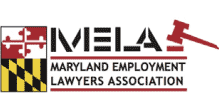Is Walking Away a Legal Claim Under Constructive Discharge?
 What if you were not technically fired from your job, but your supervisor or boss made staying impossible? You may have been the victim of harassment, or perhaps your hours were drastically cut, or your work environment was toxic, so you had no choice but to quit. You may wonder whether Maryland employment law provides any protection in a situation like this.
What if you were not technically fired from your job, but your supervisor or boss made staying impossible? You may have been the victim of harassment, or perhaps your hours were drastically cut, or your work environment was toxic, so you had no choice but to quit. You may wonder whether Maryland employment law provides any protection in a situation like this.
The answer may lie in the legal concept of constructive discharge. This means that quitting a job is treated as if you were wrongfully terminated, given how unbearable your job had become. If you need help in determining whether walking away from your job falls under constructive discharge, an experienced Ellicott City, MD employment lawyer should be your first call.
More Information Regarding Constructive Discharge
When an employee resigns, but only because his or her employer made working conditions so intolerable that any reasonable person would have felt forced to quit, this is known as constructive discharge. This means the resignation is essentially in name only, because if constructive discharge is proven, it is the same as a firing. In the state of Maryland, employees who believe they are the victim of constructive discharge can bring a legal claim that is similar to a wrongful termination claim.
What is the Legal Standard for Constructive Discharge?
Maryland courts follow the "reasonable person" test, meaning the question becomes whether a reasonable person in the employee’s position would have felt there was no choice other than resignation. The conditions that warrant a finding of constructive discharge include:
- The working conditions were objectively intolerable, not simply unpleasant.
- The intolerable working conditions were permitted or intended by the employer.
- Intolerable working conditions were the result of retaliation, discrimination, or persistent harassment.
- There were dangerous working conditions that the employer refused to fix.
- The employee was given a significant pay cut or demoted without cause.
- The employee’s hours were significantly cut for no reason.
- The employee’s shift or location was changed without a solid reason on the part of the employer.
- The employee was being retaliated against after filing a workers’ compensation claim or becoming a whistleblower.
- The employer exhibited some form of unlawful conduct, such as asking the employee to break the law.
Important Considerations Regarding Constructive Discharge
The employee in this situation has the burden of proof, meaning he or she must prove that the workplace was so intolerable that resignation was the only viable option. The employee must show that he or she gave the employer the opportunity to fix the issue (if it was an issue that could be fixed). Documentation is essential in this situation. E-mails, complaints, HR reports, and witness testimony can go a long way in proving constructive discharge.
It is also important that the employee not delay resignation for too long once the intolerable conditions arise. If an employee asserts that intolerable conditions began in January, yet he or she did not quit until October, proving constructive discharge may be challenging. If constructive discharge is proven, unemployment benefits may be supported, and the finding can significantly strengthen civil claims under Title VII or Maryland’s anti-discrimination laws.
Contact a Howard County, MD Employment Lawyer
It is always best to consult a Columbia, MD employment law attorney from Freedman Law, LLC before you resign. This gives you the best chance of fully understanding your legal options. Constructive discharge claims in the state are complex, but you can fight back. Attorney Freedman represents clients in both federal and state courts and is rated one of the best employment lawyers in Annapolis, MD. He is very hands-on and accessible, supportive, aggressive when necessary, and is available 24/7. To schedule an initial attorney meeting, call 410-290-6232.













